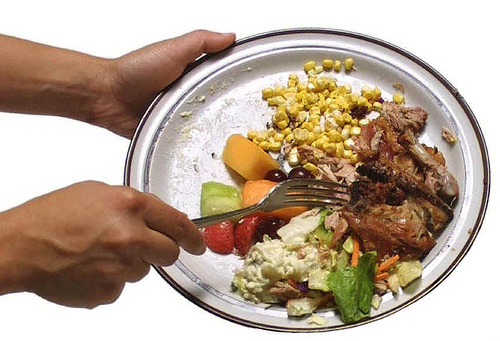
Agricultural News
As Food Prices Rise, NRDC Offers Tips to Cut Food Waste from Farm to Table
Tue, 21 Aug 2012 09:47:24 CDT

Americans are throwing away 40 percent of food in the U.S., the equivalent of $165 billion in uneaten food each year, according to a new analysis by the Natural Resources Defense Council. In a time of drought and skyrocketing food prices, NRDC outlines opportunities to reduce wasted food and money on the farm, in the grocery store and at home.
"As a country, we're essentially tossing every other piece of food that crosses our path - that's money and precious resources down the drain," said Dana Gunders, NRDC project scientist with the food and agriculture program. "With the price of food continuing to grow, and drought jeopardizing farmers nationwide, now is the time to embrace all the tremendous untapped opportunities to get more out of our food system. We can do better."
NRDC's issue brief - Wasted: How America is Losing Up to 40 Percent of Its Food from Farm To Fork to Landfill - analyzes the latest case studies and government data on the causes and extent of food losses at every level of the U.S. food supply chain. It also provides examples and recommendations for reducing this waste. Key findings include:
· Americans trash 40 percent of our food supply every year, valued at about $165 billion;
· The average American family of four ends up throwing away an equivalent of up to $2,275 annually in food;
· Food waste is the single largest component of solid waste in U.S. landfills;
· Just a 15 percent reduction in losses in the U.S. food supply would save enough food to feed 25 million Americans annually;
· There has been a 50 percent jump in U.S. food waste since the 1970s.
The causes of losses in our food system are complex, but there are notable problem areas. At the retail level, grocery stores and other sellers are losing as much as $15 billion annually in unsold fruits and vegetables alone, with about half of the nationwide supply going uneaten. In fact, fresh produce is lost more than any other food product - including seafood, meat, grains and dairy - at nearly every stage in the supply chain. Some of this is avoidable. For instance, retailers can stop the practice of unnecessary abundance in their produce displays, which inherently leads to food spoilage.
But consumers are also a major contributor to the problem, with the majority of food losses occurring in restaurants and household kitchens. A significant reason for this is large portions, as well as uneaten leftovers. Today, portion sizes are two to eight times larger than the government's standard serving sizes.
Wasted food also translates into wasted natural resources, because of the energy, water and farmland necessary to grow, transport, and store food. About half of all land in the U.S. goes to agriculture; some 25 percent of all the freshwater consumed in this country, along with 4 percent of the oil, goes into producing food that is never eaten. Moreover, uneaten food accounts for 23 percent of all methane emissions in the U.S. - a potent climate change pollutant.
Increasing the efficiency of our food system is a triple-bottom-line solution that requires collaborative efforts by businesses, governments and consumers. Specifically:
· The U.S. government should conduct a comprehensive study of losses in our food system and set national goals for waste reduction. This may require steps such as clarifying date labels on food, encouraging food recovery, and improving public awareness about ways to waste less. State and local governments can also lead by setting similar targets.
· Businesses should seize opportunities to streamline their own operations, reduce food losses and save money. The Stop and Shop grocery chain is already doing this successfully, saving an estimated $100 million annually after an analysis of freshness, loss, and customer satisfaction in their perishables department. Others should follow suit.
· Consumers can waste less food by shopping wisely, knowing when food goes bad, buying produce that is perfectly edible even if it's less cosmetically attractive, cooking only the amount of food they need, and eating their leftovers.
Europe is leading the way in reducing food waste. In January 2012, the European Parliament adopted a resolution to reduce food waste 50 percent by 2020, and designated 2014 as the "European year against food waste." In the U.K., an extensive five-year public awareness campaign called "Love Food Hate Waste" has contributed to an 18 percent reduction in avoidable food waste. And 53 of the leading U.K. food retailers and brands have adopted waste reduction resolutions.
"No matter how sustainably our food is farmed, if it's not being eaten, it is not a good use of resources," said Gunders. "Fortunately, there are ways to tackle the food waste problem, and everyone can play a role."
For more information you can read the NRDC's full issue brief by clicking here. Their food waste fact sheet is available by clicking here.
WebReadyTM Powered by WireReady® NSI
Top Agricultural News
More Headlines...




















